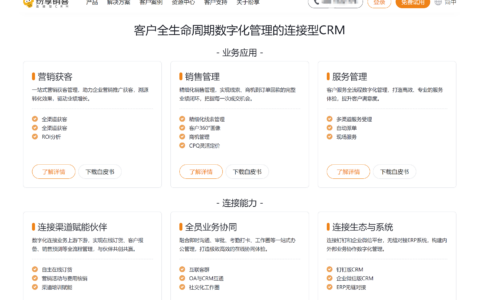
CLICK AUTOMATION TOOLS ARE FREQUENTLY CREATED USING LANGUAGES SUCH AS PYTHON, JAVA, AND JAVASCRIPT, WHICH OFFER ROBUST LIBRARIES AND FRAMEWORKS. PARTICULARLY, PYTHON STANDS OUT DUE TO ITS SIMPLICITY AND VERSATILITY FOR SUCH TASKS.
Developing click automation tools involves simulating mouse events such as clicks, often to automate repetitive tasks or testing scenarios. Among programming languages, Python is a common choice for creating such tools due to its straightforward syntax and the powerful capabilities of its libraries, such as PyAutoGUI, Selenium, or pywinauto. Selenium, for instance, is incredibly effective when automating web browsers, offering the ability to control a page or its elements programmatically. Meanwhile, PyAutoGUI allows for automation of mouse and keyboard events on the user's screen, thus fitting a wide range of automation tasks beyond web testing.
I. CHOOSING A SUITABLE PROGRAMMING LANGUAGE
The selection of a programming language for creating click automation tools largely depends on the specific requirements of the task at hand.
PYTHON'S PROMINENCE
Python shines with its extensive collection of libraries that simplify the interaction with operating system events and its straightforward syntax that makes it accessible for developers of all levels.
JAVA AND AUTOMATION
Java's robustness and its platform-independent nature make it a reliable choice for building cross-platform automation tools and integrating complex systems.
JAVASCRIPT IN WEB ENVIRONMENTS
JavaScript is often used in web automation because of its native support in web browsers and frameworks like Puppeteer and WebDriver that allow for precise control over web actions.
II. UTILIZING AUTOMATION LIBRARIES AND FRAMEWORKS
Extensive libraries and frameworks are invaluable for facilitating the development of click automation tools, providing predefined functions to simulate clicks, keystrokes, and other user interactions.
EXPLORING PYTHON LIBRARIES
Python offers several libraries such as PyAutoGUI and Selenium which are widely used for their efficiency in controlling both the browser and desktop environments.
JAVA FRAMEWORKS
Java frameworks like Selenium WebDriver and Robot Class are powerful solutions used in the industry for automated testing and web task automation.
JAVASCRIPT TOOLS
In a web context, JavaScript-based tools like Puppeteer provide a high level of automation capabilities for web applications, closely mimicking human interactions.
III. DESIGNING THE AUTOMATION TOOL
Designing an effective click automation tool necessitates accounting for user scenarios, error handling, and a clean user interface, should one be required.
ACCOUNTING FOR USER INTERACTIONS
When designing the tool, it's imperative to predict and incorporate potential user interactions and scenarios to ensure the automation is both robust and flexible.
ERROR HANDLING AND LOGGING
Reliable error handling mechanisms and logging are crucial to troubleshoot automation scripts, especially when they fail to perform as intended.
USER INTERFACE CONSIDERATIONS
While command-line tools might suffice for some users, a graphical user interface can increase the accessibility and ease of use of the automation tool.
IV. IMPLEMENTATION AND TESTING
Actual coding of the automation tool is followed by rigorous testing to ensure reliability and that user scenarios are effectively addressed.
CODING PRACTICES
Adopting best coding practices, including clean, readable code and adhering to the DRY (Don't Repeat Yourself) principle, will contribute significantly to the tool's maintainability.
PERFORMING TESTS
Testing encompasses all use cases to verify the tool's performance across different systems and environments, ensuring it meets user expectations.
ITERATIVE DEVELOPMENT AND FEEDBACK
Launching an initial version of the tool allows for real-world usage feedback, which is invaluable for iterative development and enhancements.
In conclusion, the choice of programming language and tools for clicker automation depends on the project's requirements and the developer's expertise. Python, with its vast array of relevant libraries, presents a solid option for general tasks, while JavaScript is ideal for web environments, and Java can be preferred for cross-platform applications. Effective automation implementations also factor in thoughtful design, solid testing, and iterative improvements based on user feedback.
相关问答FAQs:
1. 点击器是如何编程的?
点击器的编程可以使用多种编程语言来实现。常用的编程语言包括Python、Java、C++等。编程点击器的过程主要涉及以下几个方面:
首先,确定点击的目标对象。点击器需要能够识别并定位要点击的目标,可以使用图像识别、坐标定位等技术来实现。
其次,设计点击器的逻辑。这包括判断何时进行点击,如何模拟点击动作等。例如,可以使用循环结构进行自动点击,或者根据特定条件来触发点击动作。
然后,编写代码实现点击动作。根据所选择的编程语言,可以使用相应的库和函数来模拟点击动作。例如,在Python中,可以使用PyAutoGUI库来实现鼠标点击操作。
最后,进行调试和优化。编程点击器后,需要进行测试和调试,确保点击器的功能正常。同时,可以根据实际需求进行优化,提高点击器的性能和稳定性。
2. 点击器的编程对于自动化有什么用?
点击器的编程对于自动化任务非常有用,可以提高工作效率、减少重复性工作,并实现一些复杂的自动化任务。下面是一些常见的应用场景:
自动化测试:在软件测试中,可以使用点击器编程来模拟用户的点击行为,自动化执行测试用例,提高测试效率。
数据采集:在网页抓取、爬虫等任务中,可以使用点击器编程实现自动点击操作,进行数据的快速采集和处理。
任务自动化:运用点击器编程,可以实现一些定时任务的自动化操作,如定时自动发送邮件、生成报表等功能。
自动化操作系统操作:运用点击器编程,可以实现一些系统操作的自动化,如自动关闭程序、打开网页等。
3. 点击器编程需要注意的问题有哪些?
在进行点击器编程时,我们需要注意以下几个问题:
合法性和道德性:点击器的合法性和道德性需要被重视。在使用点击器编程进行自动化操作时,需遵守相关法律法规,不违反道德准则。
稳定性和可靠性:点击器必须稳定可靠,能够在各种环境下正确执行。对于不同的系统和应用程序,需要进行测试和调试,确保点击器的稳定性。
安全性:点击器编程需要注意安全性问题,特别是处理敏感信息时,需要加密和保护数据的安全,防止信息泄露和恶意攻击。
过度使用:过度使用点击器可能会对网站或应用程序造成负面影响,如影响服务器负载、触发反爬虫机制等。因此,在使用点击器时要遵守相关规定,避免过度使用导致不良后果。
文章标题:点击器用什么编程,发布者:飞飞,转载请注明出处:https://worktile.com/kb/p/1789028

 微信扫一扫
微信扫一扫  支付宝扫一扫
支付宝扫一扫 



